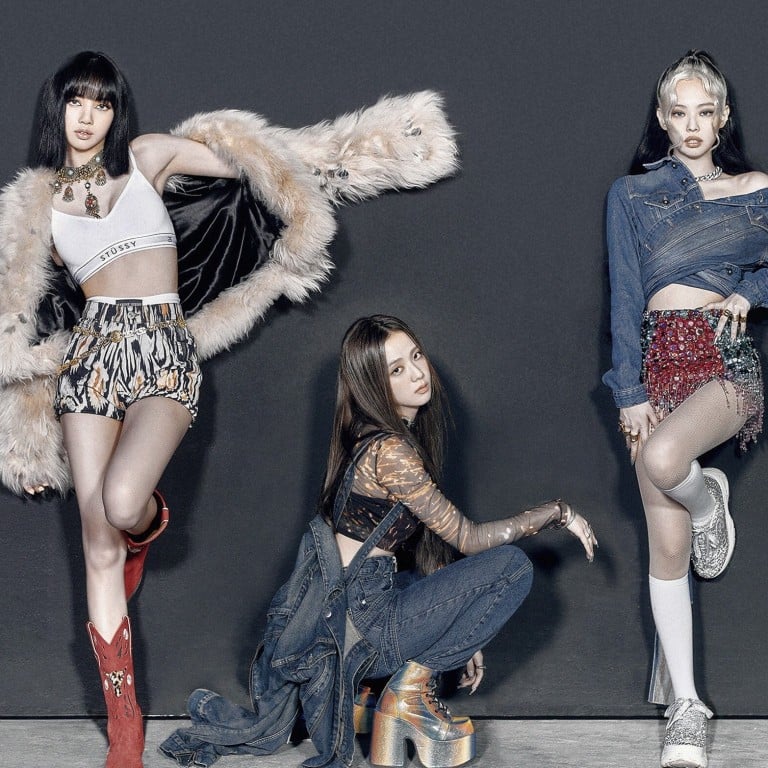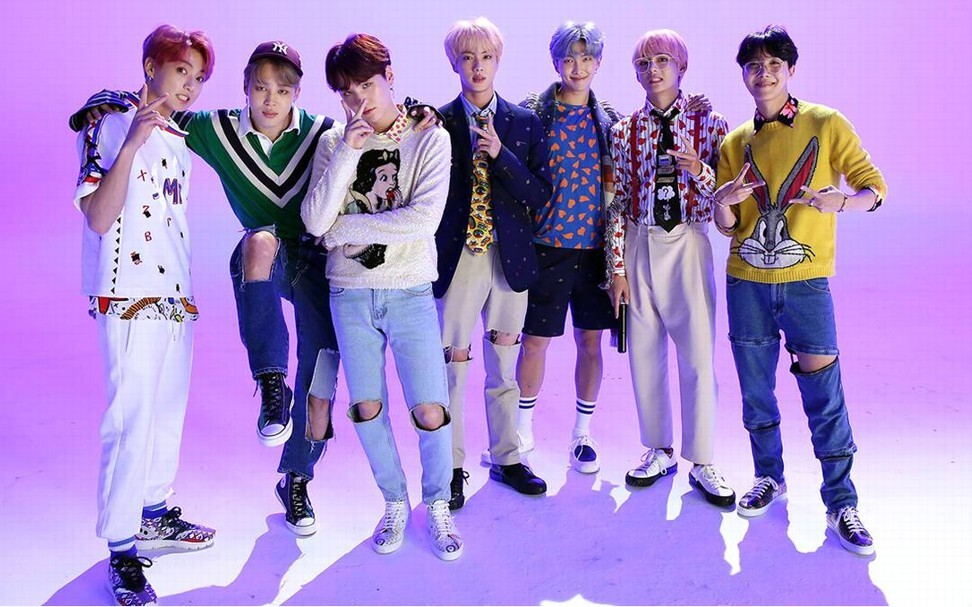
Why K-pop’s Blackpink is the biggest band in the world and how BTS could be next, according to Bloomberg
- Bloomberg’s Lucas Shaw explains how the news agency’s Pop Star Power Rankings relies on six metrics to reflect a musician’s or band’s popularity
- Ahead of BTS’ new album, he says he can see the boy band topping the rankings at some point
What does it mean to be the biggest pop band in the world? Bloomberg’s monthly Pop Star Power Rankings list is trying to answer that question.
The news agency’s list made waves last week when it named K-pop quartet Blackpink as the biggest band in the world in October. The girl group topped the chart, which was released on November 10, after a successful October that witnessed the launch of their long-awaited first LP, “The Album”, as well as the release of their Netflix documentary, Blackpink: Light Up the Sky.
The K-pop group, made up of members Jennie, Rosé, Jisoo and Lisa, were named No 1 in the world due to their world-beating YouTube views of more than 1 billion in October alone, along with their No 2 ranking on Spotify with 319 million streams. They were No 9 on the list of album sales, with 192,500 recorded.
In comparison, US rapper Pop Smoke came in second overall. He was ranked No 1 on Spotify and No 2 regarding album sales, but dropped to No 19 for YouTube views.

While Blackpink hit No 1 on the ranking, BTS, another popular K-pop act, ranked No 10. They were No 2 on YouTube that month, and are expected to appear higher on Bloomberg’s list for November after the release of their new album “BE” on Friday.
Lucas Shaw, who innovated the Pop Star Power Rankings at Bloomberg, said he helped launch the list in April after growing up as a music chart aficionado and spotting a gap in the current market.
“After covering the music business for a few years, I began to realise that many of the conventional measurements of success – the Billboard charts, the Grammys, the radio top 40 – told an incomplete picture,” he said.
I could see BTS topping the rankings. They’ve appeared many times already
Puerto Rican singer, rapper and songwriter Bad Bunny topped the list for the first three months, but since then there’s been a new No 1 artist just about every month.
“The number of people buying albums and listening to the radio shrinks by the day, and the number of people listening to music online grows by the day,” said Shaw, adding how hip-hop artists typically saw more streams than rock acts, but bands such as Guns N’ Roses would earn more from ticket sales.

Although the chart indicates whether an artist or band is typically identified as a pop, hip-hop, R&B, country, rock or electronic act, the overall Pop Star Power Rankings do not only account for “traditional” pop stars.
“Streaming services like Spotify and YouTube weren’t just changing the way we listened to music – they were offering a more complete picture of global popularity,” said Shaw.
“Stardom can be fleeting these days due to social media and streaming. An artist that is going viral one day can all but disappear in a few months. That being said, the biggest artists tend to hang around the top 10 [of the Pop Star Power Rankings] for months.”
While there are many charts that track music and ticket sales, streaming, social media presence, and so on, Shaw saw the need for an all-encompassing list.

The Bloomberg chart uses six different metrics – three-month gross revenues from live shows; 30-day ticket sales for live shows; album sales; Spotify streams; YouTube views; and Instagram interactions – to reflect three different facets of modern success for musicians: touring, music sales and social media impact.
“We are not making a value judgment based on our perception. We are relying on six metrics that reflect a musician’s popularity,” added Shaw. “Sometimes this data will surprise people, especially when touring picks back up again.”
From 2NE1 to Sistar’s Hyolyn, female K-pop stars going in new directions
Taylor Swift, for example, saw major success with her 2020 album “Folklore”, but wasn’t able to hit No 1 on the Bloomberg list, although she might when she is able to tour again. Similarly, Drake has not topped the list because he has not released a new album since the chart was launched.
The Pop Star Power Rankings may be one of the most democratic charts around, as it focuses on overall impact rather than any single factor, showing overall popularity and power. An artist has to dominate for a lengthy period to top the chart.

Bursts of popularity will not result in longevity and growth on the Bloomberg chart. To date, its No 1 artists have had multiple songs in the Spotify top 100 along with a bestselling album, typically going hand in hand with big numbers on YouTube and Instagram.
Will Blackpink continue to top the chart now that the October ranking has come and gone? Only time will tell, but Shaw feels another K-pop act has potential to hit No 1 in the near future as well.
“I could see BTS topping the rankings,” Shaw said ahead of the release of the septet’s new album. “They’ve appeared many times already.”
For more great K-pop stories, artist profiles and the latest news, visit our K-pop hub
